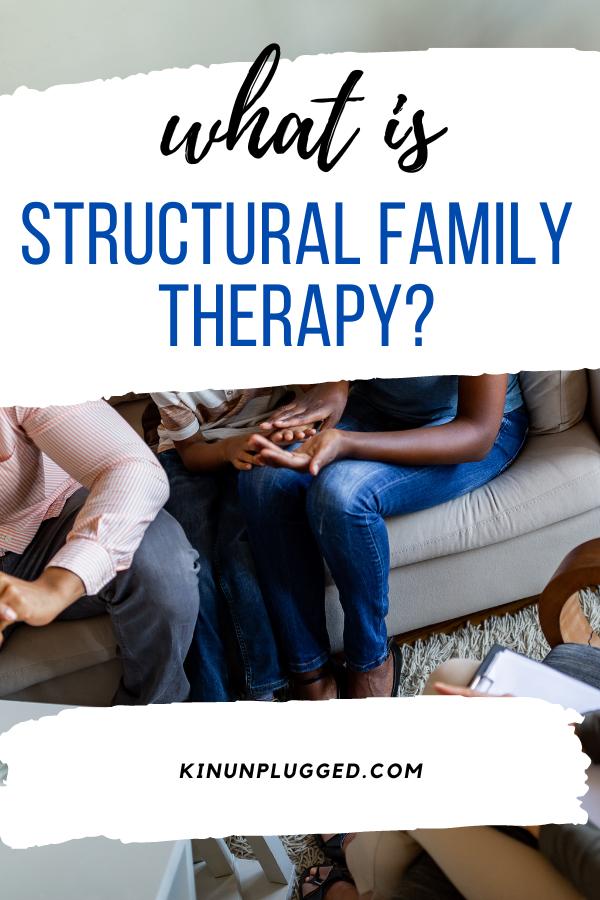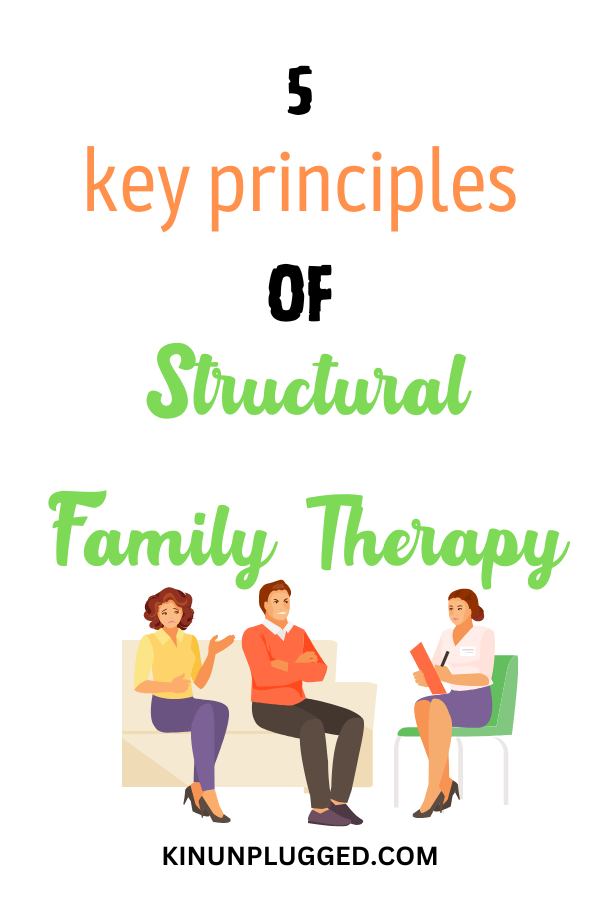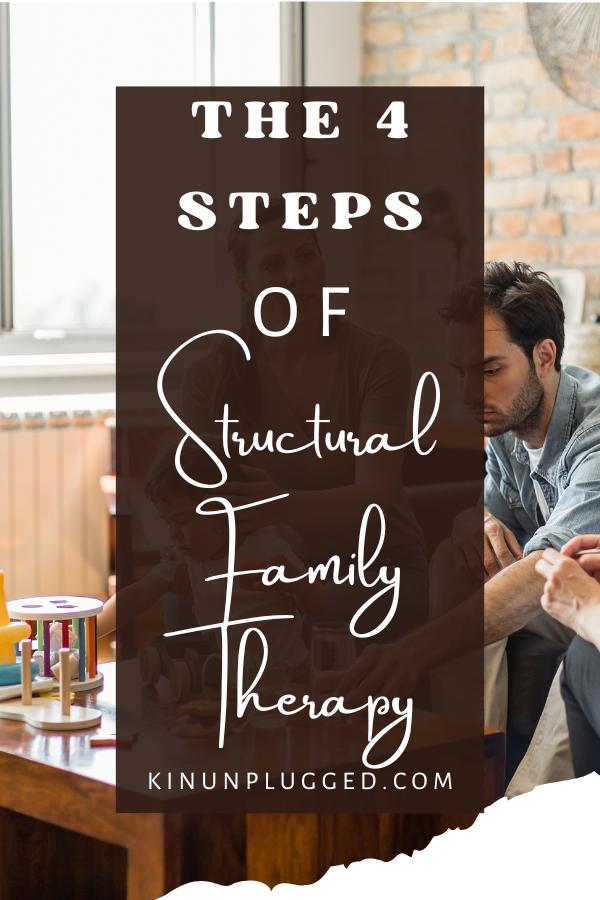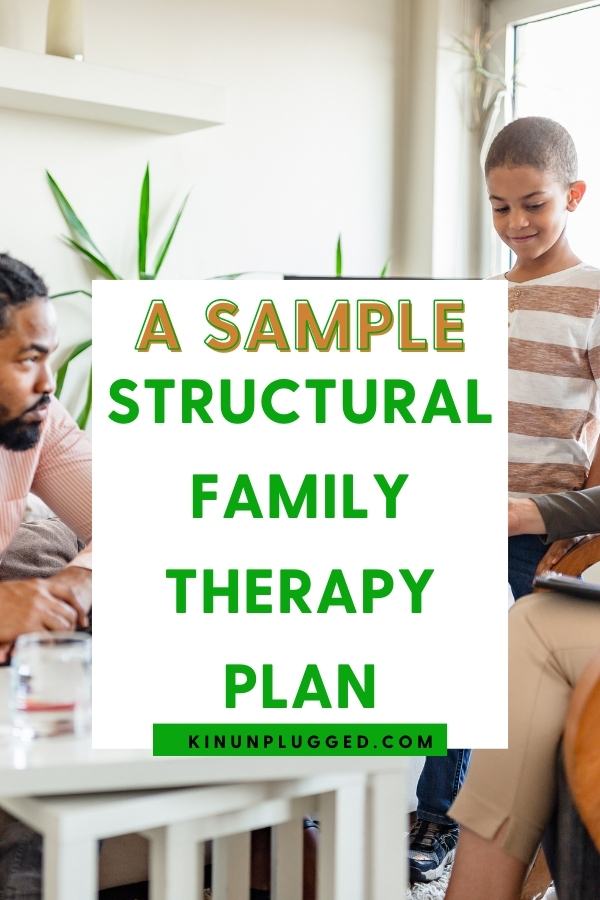Family is, arguably, the bedrock of society. It’s what usually makes a person who they are. That’s why it’s so important to work at a healthy family unit. One of the ways to do that is through family therapy. Structural family therapy is one kind of family therapy that can be especially useful.
In this article, we will look at what structural family therapy is, what its potential benefits are and who it might benefit the most. We will also look at possible downsides of structural family therapy.
What is the structural family therapy approach?

“Therapy based on this framework is directed toward changing the organization of the family.” It addresses issues from the standpoint of the family structure and organization instead based on the individuals within the family.
The Minuchin structural family therapy concept is focused on structural change as the main goal rather than individual change.
I refer to it as the Minuchin structural family therapy idea because Salvador Minuchin came up with the approach.
Who is structural family therapy good for?
Structural family therapy could be useful for any kind of family. However, the following families may benefit the most from it:
- Families with someone who has a disability. By addressing the challenges associated with the disability and its impact on family dynamics, structural family therapy can help family members develop effective communication patterns, leading to better understanding and support for the individual with a disability, for example.
- Blended families. Blended families can benefit from the structural family therapy approach by addressing the unique challenges of blended family dynamics, promoting open communication, and fostering a cohesive and supportive family unit.
- Single parent families. Structural family therapy can help by improving communication, setting clear boundaries, and developing effective coping strategies to navigate challenges and promote a nurturing and stable family environment.
- Families that have gone through traumatic change. Structural family therapy can help families that have gone through traumatic change by providing a framework to reorganise their structure, improve communication, and establish healthy coping mechanisms, fostering resilience and healing after the trauma.
The 5 key principles of structural family therapy

Structural family therapy may be said to rest on the following assumptions:
- Families can solve their own problems.
- Rigid boundaries can stop closeness and growth.
- An individual’s problems usually stem from the entire family system.
- Each family has subsystems, which are rooted in different levels of power.
- All family systems want stability and balance.
What are the four steps of structural family therapy?

The four steps of structural family therapy are:
- Joining: The first step involves the therapist establishing rapport and building a therapeutic alliance with each family member. Joining is about gaining the family’s trust, understanding their perspectives, and creating a safe environment where family members feel comfortable sharing their experiences and emotions.
- Assessment: In this step, the therapist observes and assesses the family’s structure and dynamics. The goal is to understand the family’s organization, roles, boundaries, and communication patterns. The therapist may also explore the family’s history and past experiences to gain a comprehensive view of the family system.
- Restructuring: Based on the assessment, the therapist identifies problematic patterns and interactions within the family structure. The focus is on changing dysfunctional patterns and boundaries to promote healthier relationships. This step may involve challenging and reframing certain beliefs and behaviors within the family system.
- Interventions: During this step, the therapist implements specific interventions to bring about positive changes in the family’s structure. These interventions may include boundary-setting exercises, communication skill-building, role-playing, or other techniques to help the family improve their interactions and problem-solving abilities.
The ultimate aim of structural family therapy is to enhance the family’s ability to adapt to life’s challenges and improve their overall functioning.
To put these steps into perspective, it might also be helpful to look at a structural family therapy treatment plan sample.
A structural family therapy treatment plan sample

Creating a treatment plan for structural family therapy requires tailoring the approach to the specific needs and dynamics of the family being treated. Each family is of course unique, and the following is a general sample treatment plan that can be adapted to fit individual cases.
Family Background and Presenting Issues
- Briefly describe the family’s demographic information, including members’ names, ages, and relationships.
- Outline the presenting issues that the family has identified as problematic, such as communication difficulties, parenting challenges, or conflict between family members.
Treatment Goals
1. Improve Communication: Enhance the family’s communication patterns, ensuring that each member feels heard and understood.
2. Establish Clear Boundaries: Help the family set healthy and appropriate boundaries to promote respect and reduce conflicts.
3. Reduce Parent-Child Conflict: Address any parent-child conflicts and develop more effective parenting strategies.
4. Increase Problem-Solving Skills: Assist the family in developing problem-solving skills to handle conflicts and challenges effectively.
5. Enhance Emotional Expression: Encourage the expression of emotions within the family while promoting emotional support and understanding.
6. Strengthen Family Cohesion: Promote a sense of togetherness and unity within the family.
Interventions
1. Family Sculpting: Use this technique to understand the family’s structure and relationships better. Have the family members physically arrange themselves to represent their roles and connections.
2. Boundary Exploration: Explore and discuss boundaries within the family, identifying areas where boundaries are too rigid or overly diffuse. Help the family establish healthy boundaries.
3. Communication Training: Teach active listening skills and assertive communication techniques to improve family interactions.
4. Parenting Workshops: Conduct workshops or sessions focusing on effective parenting strategies and techniques to address specific challenges.
5. Family Rituals: Encourage the establishment of family rituals or activities to foster a sense of togetherness and bonding.
6. Genogram Creation: Develop a genogram to explore family history and relationships, gaining insights into potential patterns and influences.
7. Enactments: Role-play certain family situations or conflicts to observe and analyze the family’s dynamics. Use this opportunity to provide feedback and suggest more constructive approaches.
8. Relabeling: Help the family members reframe or reinterpret certain behaviors or problems to reduce blame and foster empathy.
Timeline
- Specify the duration and frequency of therapy sessions (e.g., weekly sessions for 3-6 months).
- Mention any milestones or specific goals to be achieved at certain points in the treatment process.
Evaluation and Progress
- Regularly assess the family’s progress toward achieving the treatment goals.
- Be open to modifying the treatment plan based on the family’s feedback and developments during therapy.
This is only a general sample treatment plan. Your family counsellor would make a treatment plan to suit the specific needs and circumstances of your family. A comprehensive assessment and ongoing collaboration with a family will help refine and adjust the treatment plan as needed.
It is also helpful for you to be aware of the perceived strengths and weaknesses of structural family therapy. Keep in mind though that these may not apply to you or to your family as different families have their own experiences of structural family therapy.
5 benefits of structural family therapy approach

- Improves relationship dynamics. Structural family therapy helps identify and address dysfunctional patterns in family interactions, fostering healthier communication and emotional connections among family members.
- Focuses on specific issues. By targeting and addressing specific problem areas within the family system, structural family therapy allows for more efficient and effective interventions tailored to the family’s unique needs.
- Improves hierarchies in the family system. Through restructuring and boundary exploration, this approach aims to establish clearer and healthier hierarchies, promoting a balanced distribution of power and authority within the family.
- Evens out imbalances in the family. Structural family therapy employs techniques like “unbalancing” to challenge rigid roles and alliances, promoting more equitable relationships and reducing unhealthy imbalances.
- Improves communication. Communication training in this approach equips family members with effective communication skills, enhancing understanding and conflict resolution abilities, leading to improved overall communication within the family.
READ: My family gives me Anxiety (5 Ways to Deal)

What are the weaknesses of structural family therapy?
- Individuals have to be able to discuss their issues in front of each other. This requirement may create discomfort and hinder open communication for some family members who find it challenging to share personal issues in a group setting.
- This approach is best organized by a trained therapist. The complexity of restructuring family dynamics necessitates a skilled and experienced therapist, limiting its accessibility to families without access to trained professionals.
- It is only a short term approach. Some critics argue that the brief nature of Structural Family Therapy might not allow for sufficient time to address deep-seated and complex family issues thoroughly.
- Active participation which not all individuals are comfortable with. Not all family members may feel comfortable actively participating in therapy, potentially limiting the effectiveness of the approach in certain cases.
- The therapist has a lot of responsibility for bringing change. Critics suggest that heavy reliance on the therapist’s skill and intervention might not empower the family to develop self-sustaining problem-solving abilities for long-term change.
Structural family therapy techniques PDF

If you think a structural family therapy techniques PDF might be helpful for you to better understand how it works? Download one below now.
A structural family therapy techniques PDF can be a valuable resource for various individuals involved in the therapeutic process, including therapists, clients, and students.
Therapists can use the PDF as a quick reference guide to review different techniques and interventions used in Structural Family Therapy during their practice.
The PDF can help clients gain a better understanding of what to expect in Structural Family Therapy, explaining various techniques used and how they can contribute to positive change within the family.
For students studying family therapy or counseling, the PDF serves as a valuable educational resource to learn about the principles and application of Structural Family Therapy techniques.
Do you think structural family therapy is right for you and your family?




